How to create pots of your favorite spring bulbs in an afternoon
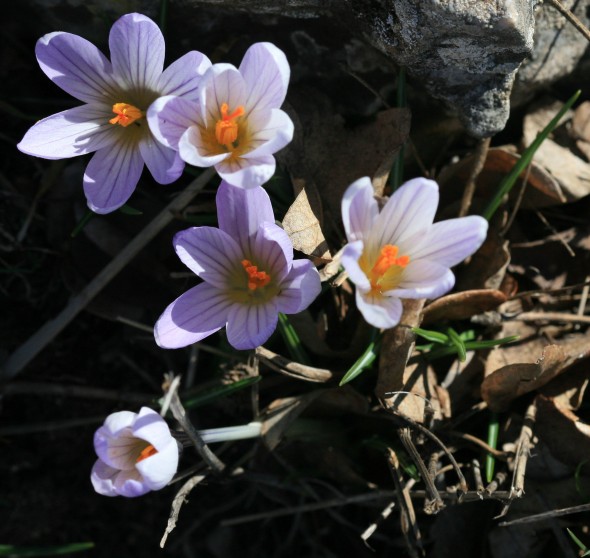
Missing the heavenly fragrance of hyacinths or the brilliant hue of tulips in your garden? Even if you didn’t have time to plant bulbs last fall, you can still create pots of your favorite spring bulbs in an afternoon.
So, even if last fall’s bulb-planting intentions fell to the bottom of your to-do list, a container garden is only a day away!
Many nurseries and garden centers recognize that you often either don’t have the time to plant bulbs in the fall, or you might not have enough space in your garden to include them. To help you out, they offer a timely solution in the form of potted bulbs that you can take home and make your own.
Read in Full Here @ BHG
Flower Bulbs : How to Thin Iris Bulbs ~ Iris Plant Care Guide
How to Divide Bearded Irises
Bearded irises tend to become crowded every two to three years and cease to produce good blooms. Division and transplanting allows the clump to rejuvenate and also provides a way to multiply your iris. It isn’t difficult to do, but it is important to do it at the right time of year to ensure that the iris benefits most from the division.
The best time to plant or transplant iris is after flowering through August. Iris are one of the few perennials to transplant during the hottest part of the year. Established plantings of iris should be divided every 3-4 years or whenever the clump becomes crowded or when flowering decreases.
How to Plant and Grow Bearded Iris (contributions by Jim Morris)
Bearded irises are relatively easy garden plants to grow and will give good results with a minimum of care, but like all plants, the better the culture the more magnificent the display. The following instructions are easy to implement and should lead to beautiful iris blooms year after year.
Iris Variety and Plant Care Guide Here @ Auntie’s
Brunnera ~ Siberian bugloss Plant Care Guide
Brunnera macrophylla (Siberian bugloss, great forget-me-not, heartleaf) is a species of flowering plant in the family Boraginaceae, native to the Caucasus. It is a hardy, rhizomatous, herbaceous perennial, that can reach from 12 to 18 inches (30 to 45 cm) in height, and carries basal, simple cordate leaves on slender stems. Sprays of small blue flowers, similar to those seen in the related forget-me-nots, are borne from mid-Spring, and bloom for eight to ten weeks.
The plant is valued as groundcover in shady areas, and has clumps of large heart-shaped leaves of about six inches (15 cm); these usually have white or cream markings, and are present all season. Plants are happy in any shady area that stays relatively moist. It often self-seeds, appearing around the garden in other places. Clumps may be easily divided in early fall.
The Latin specific epithet macrophylla means “larger-leaved”.
This plant and the variegated cultivars ‘Hadspen Cream’ and ‘Jack Frost’ have gained the Royal Horticultural Society’s Award of Garden Merit.
Herbaceous Perennial Flower
Also known as Siberian Bugloss , False Forget Me Not
Brunnera macrophylla
Boraginaceae Family
Synonym: Anchusa myosotidiflora
Perfect for moist woodland settings, dainty intensely blue flowers rise above heart shaped, dark green leaves on this spring-blooming perennial.

A superb introduction, forming a clump of heart-shaped silver leaves, delicately veined with mint green. Sprays of bright blue Forget-me-not flowers appear in mid to late spring. This is a choice collector’s plant, but an easy-to-grow perennial that performs well in all but the driest of shady conditions. Excellent for the woodland garden. ‘Jack Frost’ handles more direct sun that most other variegated types of Brunnera, though in hot-summer regions some afternoon shade is recommended to prevent leaf scorch. Selected as the 2012 Perennial Plant of the Year by the Perennial Plant Association.
Brunnera Plants: How To Plant Brunnera Siberian Bugloss
By Becca Badgett
Blooming, growing brunnera is one of the prettiest plants to include in the shady garden. Commonly called false forget-me-not, petite blooms compliment attractive, glossy foliage. Brunnera Siberian bugloss is also called heartleaf brunnera because of the shape of its leaves. It is an herbaceous perennial, dying back in winter.
About Brunnera Plants
The light blue blooms of brunnera plants rise above the leaves of various cultivars. Brunnera plants have leaves that are glossy green or in variegated hues of gray, silver or white, such as the popular cultivar ‘Jack Frost.’ Brunnera Siberian bugloss blooms in early to mid spring.
When growing brunnera, locate the plant in part to full shade, in well-drained soil that can be kept consistently and lightly moist. Brunnera plants don’t do well in soil that dries out, neither will they flourish in soggy soil.
Grass Widows ~ Wildflowers ~ Purple Eyed Grass
Olsynium douglasii (syn. Sisyrinchium douglasii, Sisyrinchium grandiflorum) is a flowering plant, commonly known as grasswidows, in the genus Olsynium, native to western North America from southern British Columbia south to northern California, and east to northwest Utah. It is the only species in the genus Olsynium in North America, the remaining 11 species being from South America. It was formerly treated in the related genus Sisyrinchium.
It is a perennial herbaceous bulbiferous plant growing to 10-40 cm tall. The leaves are slender linear, 10-30 cm long and 1.5-3 mm broad. The flowers are bell-shaped, 15-25 mm long, with six purple tepals.
There are two varieties:
Olsynium douglasii var. douglasii. Coastal western North America. Flower filaments with a narrow base.
Olsynium douglasii var. inflatum. Interior western North America. Flower filaments with an inflated base.
http://en.wikipedia.org/wiki/Olsynium_douglasii
Grass Widow (Olsynium douglassii>) is an early-blooming, perennial plant of open woodlands and rocky meadows that are wet in early spring but later dry up.
The satiny, reddish-purple to pinkish-purple flowers are up to about 1.5 in (4 cm) across and the whole plant is less than 12 in (30 cm) tall.
Hundreds of these purple flowers can cover a meadow, creating a beautiful scene as they shimmer in the breeze.
Other common names for this plant are Satin Flower and Douglas’ Blue-Eyed Grass. It has also had a different genus: Sisyrinchium
The species name douglasii honors David Douglas, a botanist who was an early explorer of the Pacific Northwest. You might have heard of Douglas Fir? Well, that was another plant named after David Douglas.
Grass Widow is in the iris family, Iridaceae, which includes only a handful of species in our region. One that is probably familiar to many northwesterners is Oregon Iris(Iris tenax).
http://www.wildpnw.com/2011/03/30/wildflower-wednesday-grass-widow/#.VN-swubF9jE
The Iris Family in the Columbia River Gorge of Oregon and Washington]
Douglas’ Grasswidow, Grass Widow, Satin-flower
http://science.halleyhosting.com/nature/gorge/3petal/iris/grasswidow.htm
Satin flower, Grass widow; Olsynium douglasii
http://sanjuanislandtrails.org/plantsw/plant-gallery/attachment/satinflowers0071/
Grass Widows Gallery
http://www.lensjoy.com/gallery/73.htm
Best Tips for Starting Seeds Indoors :) Grow Your Own!
Starting Seeds Indoors ~ Earlier fruits and flowers, plus endless variety.
Starting seeds indoors will give you earlier vegetables and flowers, and your cultivar choices will be endless. The process of germination may seem complex, but the act of seed planting is reassuringly simple. Just take it step-by-step, and you’ll soon be presiding over a healthy crop of seedlings.
http://www.organicgardening.com/learn-and-grow/starting-seeds-indoors
Here are tips from The Old Farmer’s Almanac on how to start your seeds indoors.
http://www.almanac.com/content/starting-seeds-indoors
Best Tips for Starting Seeds Indoors
Save money on vegetable seedlings and grow superior varieties of vegetables by starting seeds indoors.
Chicory ~ Cichorium intybus ~ How to Grow and Benefits
Common chicory, Cichorium intybus, is a somewhat woody, perennial herbaceous plant usually with bright blue flowers, rarely white orpink. Many varieties are cultivated for salad leaves, chicons (blanched buds), or for roots (var. sativum), which are baked, ground, and used as a coffee substitute and additive. It is also grown as a forage crop for livestock. It lives as a wild plant on roadsides in its native Europe, and in North America and Australia, where it has become widely naturalized.
http://en.wikipedia.org/wiki/Chicory

Wild Chicory or Succory is not uncommon in many parts of England and Ireland, though by no means a common plant in Scotland. It is more common on gravel or chalk, especially on the downs of the south-east coast, and in places where the soil is of a light and sandy nature, when it is freely to be found on waste land, open borders of fields and by the roadside, and is easily recognized by its tough, twig-like stems, along which are ranged large, bright blue flowers about the size and shape of the Dandelion. Sir Jas. E. Smith, founder of the Linnean Society, says of the tough stems: ‘From the earliest period of my recollection, when I can just remember tugging ineffectually with all my infant strength at the tough stalks of the wild Succory, on the chalky hills about Norwich….’
—Description—It is a perennial, with a tap root like the Dandelion. The stems are 2 to 3 feet high, the lateral branches numerous and spreading, given off at a very considerable angle from the central stem, so that the general effect of the plant, though spreading, is not rich and full, as the branches stretch out some distance in each direction and are but sparsely clothed with leaves of any considerable size. The general aspect of the plant is somewhat stiff and angular.
The lower leaves of the plant are large and spreading – thickly covered with hairs, something like the form of the Dandelion leaf, except that the numerous lateral segments or lobes are in general direction about at a right angle with the central stem, instead of pointing downwards, as in similar portions of the leaf of the Dandelion. The terminal lobe is larger and all the segments are coarsely toothed. The upper leaves are very much smaller and less divided, their bases clasping the stems.
The flowerheads are numerous, placed in the axils of the stem-leaves, generally in clusters of two or three. When fully expanded, the blooms are rather large and of a delicate tint of blue: the colour is said to specially appeal to the humble bee. They are in blossom from July to September. However sunny the day, by the early afternoon every bloom is closed, its petal-rays drawing together. Linnaeus used the Chicory as one of the flowers in his floral Clock at Upsala, because of its regularity in opening at 5 a.m. and closing at 10 a.m. in that latitude. Here it closes about noon and opens between 6 and 7 in the morning.
Read in Full Here @ A Modern Herbal ~ https://www.botanical.com/botanical/mgmh/c/chicor61.html
~~~~~~~~~~~~~
Chicory is a plant. Its roots and dried, above-ground parts are used to make medicine.
Chicory is used for loss of appetite, upset stomach, constipation, liver and gallbladder disorders, cancer, and rapid heartbeat.
It is also used as a “tonic,” to increase urine production, to protect the liver, and to balance the stimulant effect of coffee.
Some people apply a paste of chicory leaves directly to the skin for swelling and inflammation.
In foods, chicory leaves are often eaten like celery, and the roots and leaf buds are boiled and eaten. Chicory is also used as a cooking spice and to flavor foods and beverages. Coffee mixes often include ground chicory to enhance the richness of the coffee.
How does it work?
Chicory root has a mild laxative effect, increases bile from the gallbladder, and decreases swelling. Chicory is a rich source of beta-carotene.
Read in Full Here @ WebMD ~ http://www.webmd.com/vitamins-supplements/ingredientmono-92-chicory.aspx?activeingredientid=92&activeingredientname=chicory
Information On How To Grow Chicory

Image by pawpaw67
By Bonnie L. Grant
Chicory plant (Cichorium intybus) is an herbaceous biennial that is not native to the United States but has made itself at home here. The plant can be found growing wild in many areas of the U.S and is used both for its leaves and its roots. Chicory herb plants are easy to grow in the garden as a cool season crop. Seeds and transplants are the primary means of growing chicory.
Read in Full Here ~ http://www.gardeningknowhow.com/edible/herbs/chicory/growing-chicory.htm
How to Grow and the Benefits of growing Chicory from Wild Chicory Heirloom Seeds
Read in Full Here ~ http://www.localharvest.org/blog/48630/entry/how_to_grow_and_the
Forage chicory (Cichorium intybus L.) is a perennial plant that is suited to well-drained or moderately drained soils with medium-to high-fertility levels and a pH of 5.5 or greater.
Read in Full Here Forage Chickory ~ http://extension.psu.edu/plants/crops/forages/species/forage-chicory
Xerochrysum bracteatum, commonly known as the golden everlasting or strawflower
Xerochrysum bracteatum, commonly known as the golden everlasting or strawflower, is a flowering plant in the family Asteraceae native to Australia. Described by Étienne Pierre Ventenat in 1803, it was known as Helichrysum bracteatum for many years before being transferred to a new genus Xerochrysum in 1990. It grows as a woody or herbaceous perennial or annual shrub up to a metre (3 ft) tall with green or grey leafy foliage. Golden yellow or white flower heads are produced from spring to autumn; their distinctive feature is the papery bracts that resemble petals. The species is widespread, growing in a variety of habitats across the country, from rainforest margins to deserts and subalpine areas. The golden everlasting serves as food for various larvae of lepidopterans (butterflies and moths), and adult butterflies, hoverflies, native bees, small beetles and grasshoppers visit the flower heads.
The golden everlasting has proven very adaptable to cultivation. It was propagated and developed in Germany in the 1850s, and annual cultivars in a host of colour forms from white to bronze to purple flowers became available. Many of these are still sold in mixed seed packs. In Australia, many cultivars are perennial shrubs, which have become popular garden plants. Sturdier, long-stemmed forms are used commercially in the cut flower industry.
Cultivars~
http://en.wikipedia.org/wiki/Xerochrysum_bracteatum
~~~~~~~~~~~~~~~~~~~
Botany Photo of the day, photo of Xerochrysum bracteatum, known commonly as straw flower or everlasting flower. This photo was taken by Anne Elliott (aka annkelliott@Flickr) back in May, and uploaded it to the Botany Photo of the Day Flickr Pool. Thanks for sharing, Anne!
See Here …
http://www.botanicalgarden.ubc.ca/potd/2014/08/xerochrysum-bracteatum.php
~~~~~~~~~~~~~~~~~~~~~
How Do Strawflower Plants Reproduce? ~ by Fern Fischer
Varieties of perennial strawflowers (Xerochrysum bracteatum) produce various colors of flowers that are similar to annual strawflowers. Perennial plants live for a few seasons in areas with light frost — they don’t survive heavy or prolonged frost. Perennial varieties constantly renew by reseeding, or you can root tip-cuttings in sterile medium to propagate more plants. Perennial strawflowers grow in USDA plant hardiness zones 8 to 10, and are reliably winter-hardy in USDA zone 10.
Read More Here …
http://homeguides.sfgate.com/strawflower-plants-reproduce-41504.html

Facts About
Bracted strawflower is native to Australia. Also known as golden everlasting or paper daisy, this species is commonly grown as a garden ornamental, and many forms are available. It does not commonly escape cultivation, and in New England it has been collected only in Connecticut and Massachusetts.
Habitat
Anthropogenic (man-made or disturbed habitats), meadows and fields
Go Botany ~ Xerochrysum bracteatum (Vent.) Tzvelev ~ bracted strawflower
https://gobotany.newenglandwild.org/species/xerochrysum/bracteatum/

Asters Plant Care Guide ~ Varieties
The genus Aster once contained nearly 600 species in Eurasia and North America, but after morphologic and molecular research on the genus during the 1990s, it was decided that the North American species are better treated in a series of other related genera. After this split there are roughly 180 species within the genus, all but one being confined to Eurasia.[3] The name Aster comes from the Ancient Greek word ἀστήρ (astér), meaning “star”, referring to the shape of the flower head. Many species and a variety of hybrids and varieties are popular as garden plants because of their attractive and colourful flowers. Aster species are used as food plants by the larvae of a number of Lepidoptera species—see list of Lepidoptera that feed on Aster. Asters can grow in all hardiness zones.
The genus Aster is now generally restricted to the Old World species, with Aster amellus being the type species of the genus, as well as of the family Asteraceae.[1] The New World species have now been reclassified in the genera Almutaster, Canadanthus, Doellingeria, Eucephalus,Eurybia, Ionactis, Oligoneuron, Oreostemma, Sericocarpus and Symphyotrichum, though all are treated within the tribe Astereae. Regardless of the taxonomic change, all are still widely referred to as “asters” (popularly “Michaelmas daisies” because of their typical blooming period) in the horticultural trades. See the List of Aster synonyms for more information.
Some common North American species that have now been moved are:
- Aster breweri (now Eucephalus breweri), Brewer’s aster
- Aster cordifolius (now Symphyotrichum cordifolium), blue wood aster
- Aster dumosus (now Symphyotrichum dumosum), New York aster
- Aster divaricatus (now Eurybia divaricata), white wood aster
- Aster ericoides (now Symphyotrichum ericoides), heath aster
- Aster laevis (now Symphyotrichum laeve), smooth aster
- Aster lateriflorus (now Symphyotrichum lateriflorum), “Lady in Black”, calico aster
- Aster novae-angliae (now Symphyotrichum novae-angliae), New England aster
- Aster novi-belgii (now Symphyotrichum novi-belgii), New York aster
- Aster peirsonii (now Oreostemma peirsonii), Peirson’s aster
- Aster protoflorian (now Symphyotrichum pilosum), frost aster
- Aster scopulorum (now Ionactis alpina), lava aster
- Aster sibiricus (now Eurybia sibirica), Siberian aster
The “China aster” is in the related genus Callistephus.
Species
Aster alpinus is the only species ofAster (sensu stricto) that grows natively in North America; it is found in mountains across the Northern Hemisphere.
In the United Kingdom, there are only two native members of the genus: goldilocks, which is very rare, and Aster tripolium, the sea aster. Aster alpinus spp. vierhapperi is the only species native to North America.[2]
Some common species are:
- Aster alpinus, Alpine aster
- Aster amellus, European Michaelmas daisy or Italian aster
- Aster linosyris, goldilocks aster
- Aster scaber
- Aster tataricus, Tatarian aster
- Aster tongolensis
- Aster tripolium, sea aster
http://en.wikipedia.org/wiki/Aster_(genus)
**********************************
Asters are daisy-like perennials with starry-shaped flower heads. They bring delightful color to the garden in late summer and autumn when many of your other summer blooms may be fading.
The plant’s height ranges from 8 inches to 8 feet, depending on the type. You can find an aster for almost any garden and they have many uses, such as in borders, rock gardens, or wildflower gardens. Asters also attract butterflies to your garden!
http://www.almanac.com/plant/aster
*************************
Aster’s brilliant flowers brighten the fall garden when little else is blooming. Indeed, “aster,” the Latin word for “star,” aptly describes the starry flower heads. Another common name is Michaelmas daisy.
About This Plant
Aster thrives in areas with cool, moist summers. It produces blue, white, or pink flowers in the late summer or fall. Plant height ranges from 8 inches to 8 feet, depending on variety. Tall varieties make good back-of-the-border plants and are also attractive planted in naturalized meadows. Aster is susceptible to powdery mildew and rust diseases, so choose disease-resistant varieties.
Special Features
Attracts butterflies.
Site Selection
Select a site with full sun to light shade and well-drained soil.
Planting Instructions
Plant in spring, spacing plants 1 to 3 feet apart, depending on the variety. Prepare garden bed by using a garden fork or tiller to loosen the soil to a depth of 12 to 15 inches, then mix in a 2- to 4-inch layer of compost. Dig a hole twice the diameter of the pot the plant is in. Carefully remove the plant from its container and place it in the hole so the top of the root ball is level with the soil surface. Carefully fill in around the root ball and firm the soil gently. Water thoroughly.
Care
Apply a thin layer of compost each spring, followed by a 2-inch layer of mulch to retain moisture and control weeds. Pinch young shoots back to encourage bushiness. Water plants during the summer if rainfall is less than 1 inch per week. Stake tall varieties to keep them upright. After the first killing frost, cut stems back to an inch or two above soil line. Divide plants every three to four years as new growth begins in the spring, lifting plants and dividing them into clumps containing three to five shoots.
http://www.garden.org/plantguide/?q=show&id=2031
**********************
How to Grow and Care for Aster Flowers

Perennial
Growing Asters is easy. Perennial Aster flowers grow well in average soils, but needs full sun. Aster flowers come in blues, purples and a variety of pinks. All Asters are yellow in the center of the flower. They are daisy-like in appearance, even though they are a member of the sunflower family.
Did you know? The yellow center of Asters is actually comprised of many tiny flowerets.
Asters come in a wide variety, with some less than a foot tall, while others are two feet tall or more. Both large and smaller varieties make good cut flowers for vases and arrangements.
Plant Height: up to 24 inches
Flowers Bloom: Summer/Fall
*******************************
All About Asters
From tall to small, splashy to subdued, these perennials are proven performers.
by Leonard Perry
from Fine Gardening issue 135
http://www.finegardening.com/all-about-asters
***********************************

How to Plant a Spirea Bush ~ Plant Care Guide
Spiraea /spaɪˈriːə/, is a genus of about 80 to 100 species of shrubs in the family Rosaceae. They are native to the temperate Northern Hemisphere, with the greatest diversity in eastern Asia.
The genus formerly included the herbaceous species now segregated into the genera Filipendula and Aruncus; recent genetic evidence has shown that Filipendula is only distantly related to Spiraea, belonging in the subfamily Rosoideae.
Spiraea plants are hardy, deciduous-leaved shrubs. The leaves are simple and usually short stalked, and are arranged in a spiralling, alternate fashion. In most species, the leaves are lanceolate (narrowly oval) and about 1 to 4 inches (2.5 to 10.2 cm) long. The leaf margins are usually toothed, occasionally cut or lobed, and rarely smooth. Stipules are absent.
The many small flowers of Spiraea shrubs are clustered together in inflorescences, usually in dense panicles, umbrella-like corymbs, or grape-like clusters. The radial symmetry of each flower is five-fold, with the flowers usually bisexual, rarely unisexual. The flowers have five sepals and five white, pink, or reddish petals that are usually longer than the sepals. Each flower has many (15 to 60) stamens. The fruit is an aggregate of follicles.
Species
- Spiraea affinis
- Spiraea alaskaense
- Spiraea alba – narrow-leaved meadowsweet, pale bridewort
- Spiraea albiflora
- Spiraea amoena
- Spiraea arcuata
- Spiraea baldschuanica
- Spiraea bella
- Spiraea betulifolia – white meadowsweet
- Spiraea blumei
- Spiraea calcicola
- Spiraea cana
- Spiraea canescens – Himalayan spiraea
- Spiraea cantoniensis – Reeve’s spiraea
- Spiraea chamaedryfolia – elm-leaf spiraea, germander meadowsweet
- Spiraea crenata
- Spiraea decumbens
- Spiraea douglasii – Douglas’ spiraea, steeplebush
- Spiraea gemmata
- Spiraea henryi
- Spiraea hypericifolia – Iberian meadowsweet
- Spiraea japonica – Japanese spiraea
- Spiraea lobata
- Spiraea longigemmis
- Spiraea media – Russian spiraea
- Spiraea micrantha
- Spiraea miyabei
- Spiraea mollifolia
- Spiraea nervosa
- Spiraea nipponica
- Spiraea prunifolia – bridal-wreath spiraea
- Spiraea pubescens
- Spiraea rosthornii
- Spiraea salicifolia – bridewort, willowleaf meadowsweet
- Spiraea sargentiana
- Spiraea septentrionalis – northern meadowsweet
- Spiraea splendens – rose meadowsweet
- Spiraea stevenii – beauverd spirea
- Spiraea thunbergii – Thunberg’s meadowsweet
- Spiraea tomentosa – hardhack, steeplebush
- Spiraea trichocarpa
- Spiraea trilobata – Asian meadowsweet
- Spiraea veitchii
- Spiraea virginiana – Virginia spiraea
- Spiraea wilsonii
- Spiraea yunnanensis
Hybrids
There are also numerous named hybrids, some occurring naturally in the wild, others bred in gardens, including several important ornamental plants:
- Spiraea × arguta (S. × multiflora × S. thunbergii) – garland spiraea
- Spiraea × billiardii (S. douglasii × S. salicifolia) – Billiard’s spiraea
- Spiraea × blanda (S. nervosa × S. cantoniensis)
- Spiraea × brachybotrys (S. canescens × S. douglasii)
- Spiraea × bumalda (S. japonica × S. albiflora)
- Spiraea × cinerea (S. hypericifolia × S. cana)
- Spiraea × conspicua (S. japonica × S. latifolia)
- Spiraea × fontenaysii (S. canescens × S. salicifolia)
- Spiraea × foxii (S. japonica × S. betulifolia)
- Spiraea × gieseleriana (S. cana × S. chamaedryfolia)
- Spiraea × macrothyrsa (S. douglasii × S. latifolia)
- Spiraea × multiflora (S. crenata × S. hypericifolia)
- Spiraea × notha (S. betulifolia × S. latifolia)
- Spiraea × nudiflora (S. chamaedryfolia × S. bella)
- Spiraea × pikoviensis (S. crenata × S. media)
- Spiraea × pyramidata (S. betulifolia × S. douglasii) – pyramid spiraea
- Spiraea × revirescens (S. amoena × S. japonica)
- Spiraea × sanssouciana (S. japonica × S. douglasii)
- Spiraea × schinabeckii (S. chamaedryfolia × S. trilobata)
- Spiraea × semperflorens (S. japonica × S. salicifolia)
- Spiraea × vanhouttei (S. trilobata × S. cantoniensis) – Van Houtte’s spiraea
- Spiraea × watsoniana (S. douglasii × S. densiflora)
http://en.wikipedia.org/wiki/Spiraea
~~~~~~~~~~~~~~~~~~~~~~~~~~~~~~~~~~~~~~~~~~~~
How to Plant a Spirea Bush ~ by Caryn Anderson
http://homeguides.sfgate.com/plant-spirea-bush-24222.html
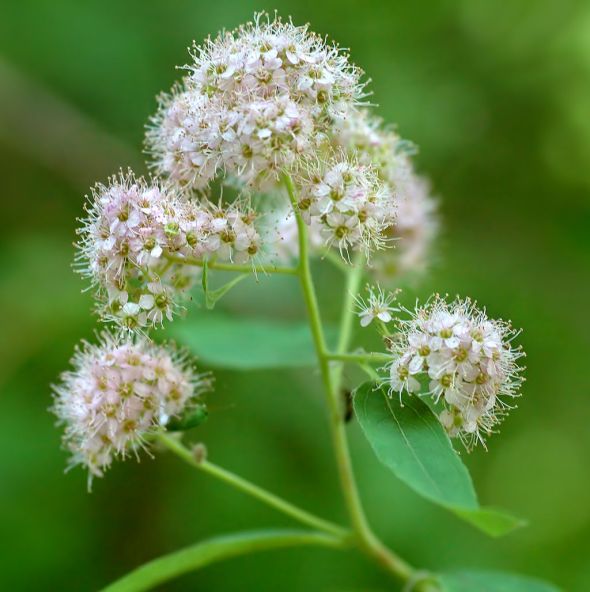 Adding a 2-inch layer of mulch helps discourage weeds from growing.
Adding a 2-inch layer of mulch helps discourage weeds from growing.
Spireas (Spiraea) fill the landscape with cascading clusters of flowers that bloom in spring and summer. These deciduous shrubs grow to heights and spreads of 2 to 10 feet, depending on the variety. They are hardy in Sunset Climate Zones 14 through 17. Spireas flourish in coastal and inland climates and are one of easiest types of flowering shrubs to grow, since they require minimal maintenance and adapt to a range of growing conditions.
Find a planting area that has well-draining soil, receives full to partial sun exposure and has enough space to accommodate the spirea’s projected mature size. Take spacing into consideration. Plan to allow 2 to 15 feet between plants, allowing more space between larger varieties of spirea.
- Dig a hole that is as deep as the spirea’s root ball and at least twice as wide to allow the roots to spread out. In general, you do not need to add anything to the soil or test its pH since spireas adapt to most types of soil. If the soil is very low in organic materials, mix about 1 inch of compost in with the garden soil while planting.
- Remove the plant from its container, gently loosening any roots that are wound tightly around the root ball. Place it upright in the hole and fill it in halfway with soil. Water the hole thoroughly, saturating the ground to remove any air pockets that may later damage the spirea’s roots. Wait until the water is absorbed to fill the hole completely with soil and water thoroughly again.
- Create a ring around the spirea’s hole, mounding soil 2 to 3 inches high to help hold water in the planting area. Distribute a layer of mulch about 2 inches thick around the planting area beyond the ring that you created. After the plant’s first season, remove the ring and place mulch closer to the plant.
- Water plants regularly throughout the growing season, adding an average of 1 inch of water weekly. Where you live may dictate how frequently you have to water your plants. For example, gardeners in coastal areas usually have sandy soil. Sandy soil drains faster than other types of soil, making it necessary for gardeners to water more frequently.
Things You Will Need
Spade
Garden tiller (optional)
Compost (optional)
Mulch
Planting times are flexible. Gardeners should plant spireas in spring or fall to allow young plants time to become established before summer.
About the Author
Caryn Anderson has been writing professionally since 2007. She specializes in a variety of subjects, including food and healthy recipes, pets and health. She is an avid gardener and travel enthusiast. Anderson holds her Bachelor of Science in communication studies from New York University.
Photo Credits
Jupiterimages/Photos.com/Getty Images
~~~~~~~~~~~~~~~~~~~~~~~~~~~~~~~~~~~~~~~~~~~~~~~
Care of Spirea ~ by Jackie Carroll
Spirea comes in a wide range of sizes and types, each with its own uses in the landscape. Small varieties, such as the 1.5-foot-tall Spirea japonica, work well as neat, rounded ground covers. Mid-sized plants, including most varieties of S. x cineria show best in foundation plantings and shrub borders. If you’re looking for an informal hedge or specimen plant, choose S. nipponica, S. prunifolia or S. vanhouttei, which grow to between 5 and 9 feet tall. Spring-blooming spireas generally have white flowers, while summer-blooming types usually bloom in shades of pink or red.
http://homeguides.sfgate.com/care-spirea-21670.html
Spirea ~ Spireas are small to medium sized deciduous shrubs that produce cascades of flowers in spring and summer.
http://www.garden.org/plantguide/?q=show&id=2103
Growing Spirea Shrubs: Information On How To Care For Spirea Bushes
http://www.gardeningknowhow.com/ornamental/shrubs/spirea/growing-spirea-shrubs.htm
My Newest Addition :) Sisyrinchium angustifolium ~ blue-eyed grass
will do blog regarding Sisyrinchium varities tomorrow after i plant mine 😀
Crocus vernus flower time lapse ~ Crocus Plant Care Guide
Crocus ~ Plant Care Guide

A sure sign of spring, crocuses have low-growing, colorful, cup-shaped flowers that are a welcome sight in garden beds and lawns.
About This Plant
Mass plantings of colorful crocuses herald the start of spring, sometimes poking their flowers right up through the snow. Because the plants flower so early, crocuses adapt well to planting in lawns and will multiply over time to cover large areas. Select varieties that mature at different times to extend the bloom season. Flower colors include blue, violet, striped, yellow, and white, and height ranges from 3 to 6 inches. While most crocus flower in spring, the saffron crocus is a fall-flowering crocus that is planted in spring.
Read in Full Here @ Auntie Dogma’s
Grow a Vertical Vegetable Garden in a Small Space with Hog Wire
Vertical farming is cultivating plant or animal life within a skyscraper greenhouse or on vertically inclined surfaces. The modern idea of vertical farming uses techniques similar to glass houses, where natural sunlight can be augmented with artificial lighting.
http://en.wikipedia.org/wiki/Vertical_farming
Vertical Gardening
Up, up, and away! Squeeze more vegetables into small spaces with trellises.
How to Grow Vegetables Vertically @ Wikihow
Vertical Gardening Techniques for Maximum Returns @ Auntie Dogma’s
Natural Remedies: Stress and Anxiety
Natural Remedies: Stress and Anxiety
We all have times when stress, anxiety, and sleeplessness enter our lives. Here are traditional herbal remedies to help.
First calm thyself. If gardening or another relaxing activity doesn’t calm your nerves and make you sleep well, try a tea (really a tisane, from the Greek for “medicinal brew.)
Herbal Teas
- Teas of chamomile, basil, marjoram, or basil help ease stress. Use about 1 ounce fresh herbs (half of that if dried) for every 2 to 3 cups water.
- A tea of elderberry flowers is considered relaxing to the nerves and is sleep inducing, too. (Caution! Avoid if pregnant.)
- For insomnia, drink bee balm which acts as a mild sedative, calming the nerves and aiding sleep. Take an infusion of 2 teaspoons chopped leaves in 1 cup boiling water.
- Drink rosemary tea to alleviate melancholy or depression.
- Native America tea ingredients for insomnia included lady’s slipper (decocted), yarrow, mullein, hops, and purslane (decocted).
- Valerian tea (or capsules) is a natural sleep aide. In infusions, 1 ounce of the roots in 1 pint boiling water is a common recipe, consumed by wineglass as needed. (Caution: Too high a dose may lead to negative side effects!)
Food
- First, do not eat your final meal late in the evening, and keep the meal light.
- Eating lettuce with your dinner is supposed to be calming, helping you to sleep and have pleasant dreams. Some say you should not have vinegar with your lettuce.
- Mandarin oranges are soporifics, so consider adding them to your evening meal to help insomnia.
- Native Americans reportedly ate raw onions to induce sleep. (They also used a variety of herbal syrups and poultices but they’re a bit too complicated for most of us today.)
- Trying to remain relaxed but alert? Some studies suggest that the smell of apples, apple cider vinegar, or spiced apples have this effect. The right smell can make all the difference.
Massages and Rubs
- Massage the temples with lavender oil.
- A warm bath with a couple of drops of chamomile oil aides sleeping. Add a slash of lavender oil for a relaxing aroma.
- For a relaxing body rub, soak equal parts finely chopped dandelions, burdock (roots and/or aerial parts), yellow dock, and lobelia in 1 quart rubbing alcohol for two weeks. Apply externally.
Bedtime
- Strew lavender in the linen closet to scent your bed sheets with this mildly narcotic herb.
- Try putting a few drops of lavender oil in your nose—gently, with a cotton swab (Q-tip).
- Sprinkle infusions of dill on your pillowcases and quickly iron them dry or fluff them in a clothes dryer.
- Dill will also lull cranky babies to sleep. Add dill infusion to the bath, sprinkle on a baby’s blanket, or use as a hair rinse.
- Sage is considered a “ghost medicine,” used to prevent nightmares. Strew it on the floor or in the bed.
- Keep in mind: Not every fragrant herb is suitable for a good night’s sleep. Some can have the reserve effect. You may wish to consult a herbalist.
A good laugh and a long sleep are the best cures in the doctor’s book.
–Irish proverb
Related Articles
Health benefits of Borage ~ Plant Care Guide
Borage is a beautiful flowering plant that grows in the wild in the Mediterranean. It is cultivated and used widely throughout Europe for its healing properties and for a nice addition to a salad. Borage is also cultivated in the US, where it is more popular as an herbal supplement rather than a food product. The leaves are robust and have medicinal properties and the topper of the plant is a striking blue star shaped flower. The flowers are edible as well and are often found candied for cake decorations or made into sweet syrups. In Italy it is served as a side dish much like a serving of vegetables.
Borage is from the Boraginaaceae family and has the proper name of Borago officinalis. Borage is also known as the Bee plant and Bee Bread because the blue purplish star shaped flower attracts bees all summer long. Throughout history Borage has been used to treat a multitude of ailments and to improve overall health. The Romans would mix Borage tea and wine prior to combat, most likely to fortify themselves for the battle.
There are multiple health benefits one can get from taking Borage as a herbal supplement. One of the most important nutrients in Borage is essential fatty acids, something our body needs for good health. Essential fatty acids must be ingested from diet. An essential fatty acid deficiency can directly affect mood, internal inflammation and various cellular functions. In order for metabolic processes such as cardiovascular functions to work properly, they depend on the proper levels of essential fatty acids in the body. EFA’s also improve hair and nail growth and appearance. Specifically, Borage has very high levels of GLA, gamma linolenic acid, an important essential fatty acid. Borage is often used to boost GLA deficiencies in children as well to ensure proper growth.
Borage is also packed with other healthy nutrients that are great for the body. Borage is a good herbal supplement for women because it contains high levels of calcium and iron, nutrients many women are deficient in. Potassium, Zinc, B and C Vitamins, and beta carotene are packed into the Borage plant making it very nutritional.
The adrenal glands in our body work very hard all day to prepare our body for fight or flight situations, constantly releasing adrenalin into the body. Adrenal fatigue can occur when the body is overstressed. Borage is used to restore the adrenal glands to their natural balance, which in turn creates a calmer body and mind.
Borage is well known for its soothing qualities and has been used to treat nervous conditions. Its natural sedative effects have been used for lifting the spirits and softening the nervous edge some people experience. Borage works well to ease the depression and mood swings often associated with menopause and menstrual cycles as well and is a nice alternative to traditional prescription medications.
There are many current ongoing studies involving the health benefits of Borage. Borage is currently being researched as a possible treatment for rheumatoid arthritis because of it’s anti inflammatory properties. Because of research like this, Borage is now known to reduce itch and dryness associated with certain skin disorders such as eczema and dermatitis.
Borage can be found in a caplet form, or as a liquid extract of the plant. Borage oil is distilled from the seeds of the plant and used topically or taken internally. It is not recommended to be taken long term internally due to the concentration of alkaloids in Borage that can damage the liver. A typical dose of the caplet or extract form is one to two grams per day. The dried leaves can be brewed into a tea, which has been said to have a refreshing cucumber like flavor.
It is not recommended that Borage be taken long term internally because of the concentration of alkaloids in Borage that can damage the liver. Do not take Borage if you are taking anti-coagulants without discussing it with your doctor first. Nausea, cramping, bloating and headache are side effects that Borage can cause, although they are relatively mild.
See Also
Borage Herbal Medicine ~ Borage Uses, Health Benefits And Side Effects
Borage nutrition facts
Borage Alchemy works
Borage Magick
Ruler: Jupiter and Leo
Type: Herb
Other Names: “Barrach” (Celtic for “man of courage”), tailwort, bee’s bread, andstarflower
Magickal Form: Blossoms, dried leaves
Borage is legendary for its spirit-lifting and courage-inducing properties. Celtic warriors drank wine flavored with borage to give them courage in battle, borage leaves and flowers were eaten for courage by Roman soldiers before they went into battle. Medieval knights wore scraves embroidered with the flowers for the same reason.
For courage, tuck a borage blossom in the pocket before any stressful situation, or drink a tea or glass of wine flavored with borage leaves.
Drinking borage tea is said to increase psychic powers and relieve symptoms of depression. Many of the most noted herbalists throughout history have considered it a very effective anti-depressant for the feeling of elation it induces.
Pliny said that borage-flavored wine was the Nepenthe of Homer, which when drunk brings forgiveness. In Elizabethan England, it was considered to lift melancholy; according to Culpeper, borage expells pensiveness and melancholy, and the candied or jellied flowers comfort the heart and spirits of those who are sick from consumption or from the passions of the heart. Gerard recommended eating this herb in a salad for joy and said that a syrup made of the flowers “purgeth melancholy and quieteth the phreneticke and lunaticke person.”
Place the fresh blossoms on an altar to bring luck and power to your spells. Sprinkle crushed dried leaves around the workplace for inspiration and business expansion. Drink the tea to increase psychic abilities.
Eating the flowers in salads aids courage and cheerfulness and ends melancholy. The flowers sprinkled in the bath are good for courage or for Jovian protection, and a cup of borage tea can help with feelings of vulnerability and disjointedness.
In Hoodoo, borage flowers in the house help bring about domestic tranquility. Borage flowers may be used alone or mixed with blue-flowered Corn Flowers, Periwinkle, Rosemary, or Forget-Me-Not. Steep the flowers to make a tea. You can also add this tea to a floor wash for a peaceful home.
You can also sprinkle it at the 4 corners of the property, the 4 corners of the house, the 4 corners of each room, and the 4 corners of the kitchen table, to restore harmony and love to the family.
Place a pinch of dried Borage flowers in each corner of a room where family fights have occurred, with a fifth pinch under the rug at the center of the room.
Because of its connections to Jupiter, this herb is associated with the Hierophant in the tarot deck.
From: Encyclopedia of Magickal Ingredients
Starflower ~ Borage Plant Care Guide @ Auntie Dogma’s
Tip! Borage can be planted now in Northern Hemisphere 🙂
Poinsettia Tips
“Christmas Star”~”Star of Bethlehem”~Poinsettia
The poinsettia (/pɔɪnˈsɛtiə/ or /pɔɪnˈsɛtə/)[1][2] (Euphorbia pulcherrima) is a culturally and commercially important plant species of the diverse spurge family that is indigenous to Mexico and Central America. It is particularly well known for its red and green foliage and is widely used in Christmas floral displays. It derives its common English name from Joel Roberts Poinsett,[3] the first United States Minister to Mexico,[4] who introduced the plant into the United States in 1825.
Toxicity claims
In the United States and perhaps elsewhere, there is a common misconception that the poinsettia is highly toxic. This misconception was spread by a 1919 urban legend of a two-year-old child dying after consuming a poinsettia leaf.[17]
While the sap and latex of many plants of the spurge genus are indeed toxic,[18] the poinsettia’s toxicity is relatively mild. Its latex can cause an allergic reaction in sensitive individuals.[19] It is also mildly irritating to the skin or stomach[6] and may sometimes cause diarrhea and vomiting if eaten.[20] Sap introduced into the human eye may cause temporary blindness.[21] An American Journal of Emergency Medicine study of 22,793 cases reported to the American Association of Poison Control Centers showed no fatalities, and furthermore that a strong majority of poinsettia exposures are accidental, involve children, and usually do not result in any type of medical treatment.[22] POISINDEX, a major source for poison control centers, says a 50-pound child would have to eat 500 bracts to accumulate levels of toxins found to be harmful in experiments.[17] An Ohio State University study showed no problems even with extremely large doses.[23]
PRESERVING POINSETTIAS BEYOND THE HOLIDAYs Here
Cooperative Extension Service Michigan State University Extension Bulletin
Poinsettias are traditional Christmas flowering plants that will last throughout the Christmas season. This bulletin describes how to select and care for poinsettias and how to reflower them.

Tamarillo Tree….. Cyphomandra betacea
Tamarillo Tree….. Cyphomandra Betacea
Cleome hassleriana Plant Care Guide ~ Spider Flower
Cleome hassleriana, commonly known as spider flower or spider plant,[1] is a species of flowering plant in the genus Cleome of the family Cleomaceae, native to southern South America in Argentina, Paraguay, Uruguay, and southeast Brazil.[2]
It is an annual growing to a height of 150 cm (60 in), with spirally arranged leaves. The leaves are palmately compound, with five or seven leaflets, the leaflets up to 12 cm (5 in) long and 4 cm (2 in) broad and the leaf petiole up to 15 cm (6 in) long. The flowers are purple, pink, or white, with four petals and six long stamens. The fruit is a capsule up to 15 cm long and 3 mm (0.1 in) broad, containing several seeds. Flowering lasts from late spring to early fall.[1]
C. hassleriana is commonly cultivated in temperate regions as a half-hardy annual. Numerous cultivars have been selected for flower color and other attributes. The “Queen” series includes the cultivars ‘Violet Queen’, ‘Rose Queen’, and ‘White Queen’. The cultivar ‘Helen Campbell’ has gained the Royal Horticultural Society’s Award of Garden Merit.[3]
Plants in cultivation have at times been misidentified as Cleome arborea, C. pungens or C. spinosa.[2]
The Cleome Hassleriana Plant
Cleome hassleriana @ the back yard gardener
Cleome hassleriana @ M.Botanical Gardens

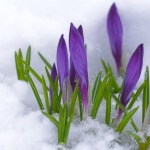
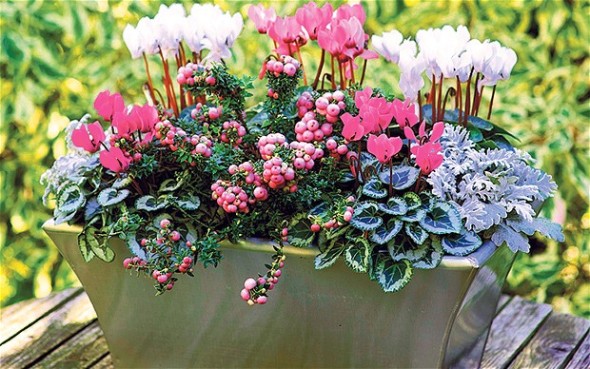
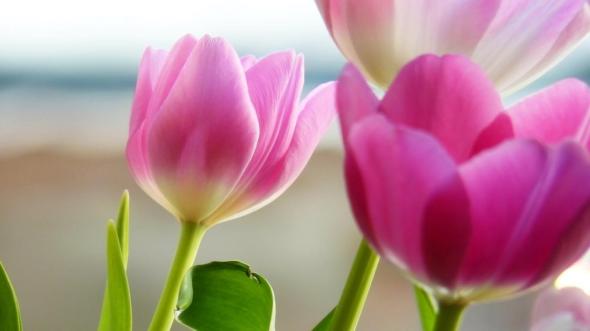

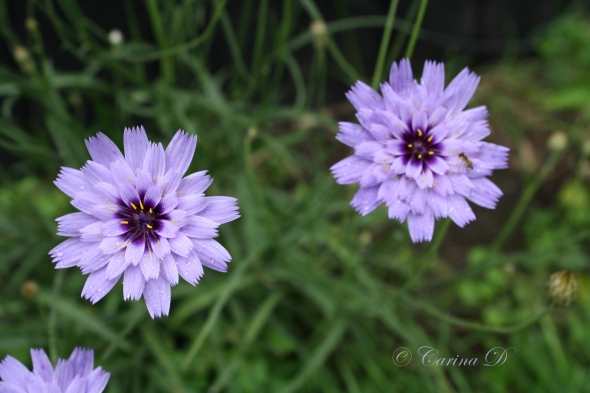
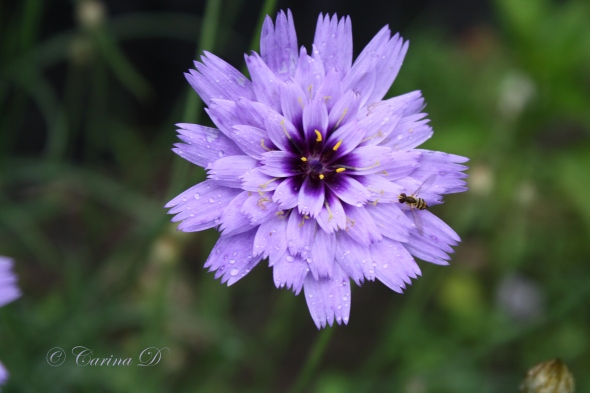
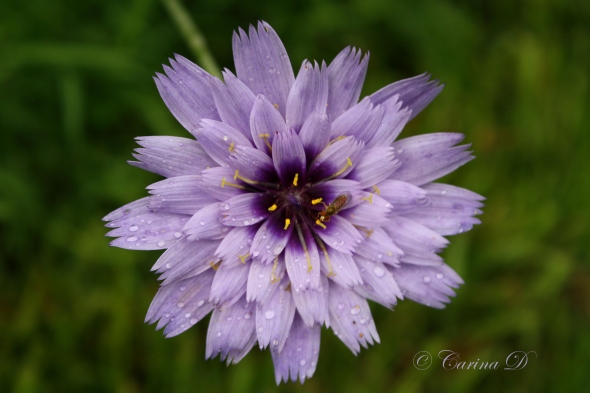


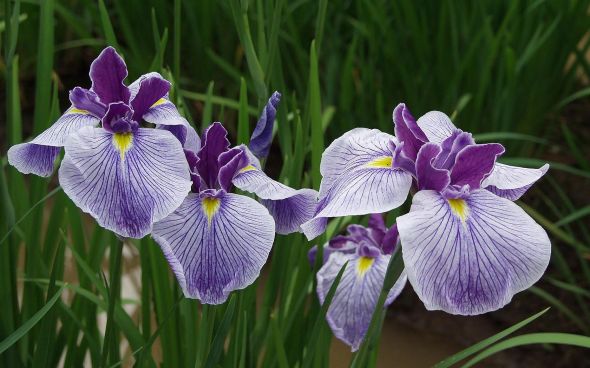

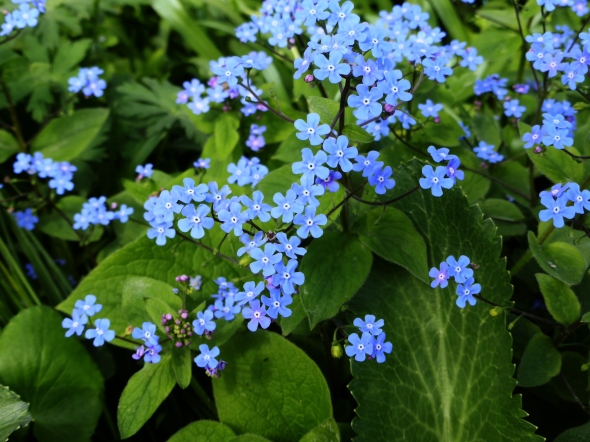
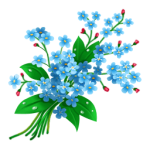
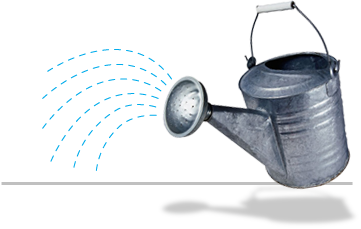
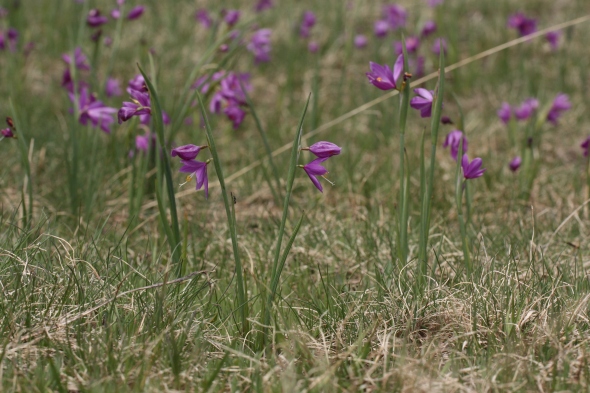
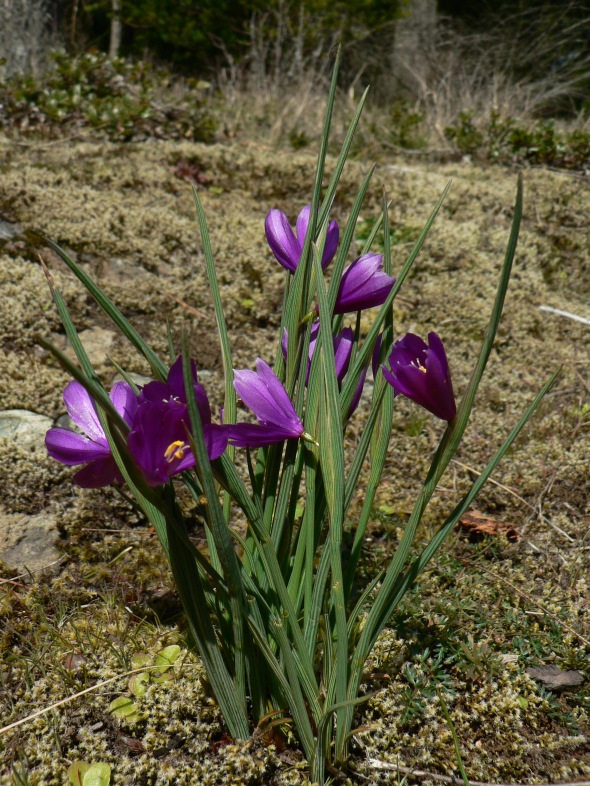
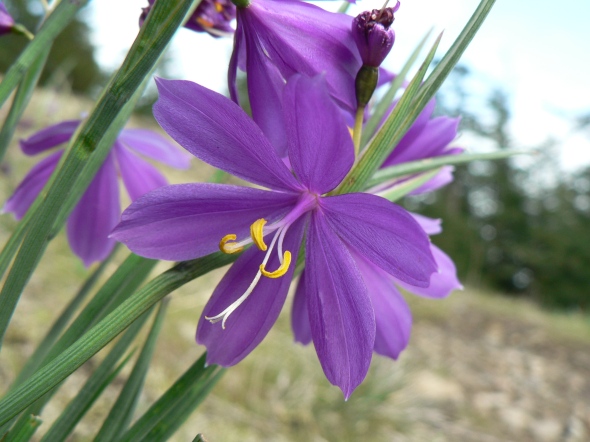
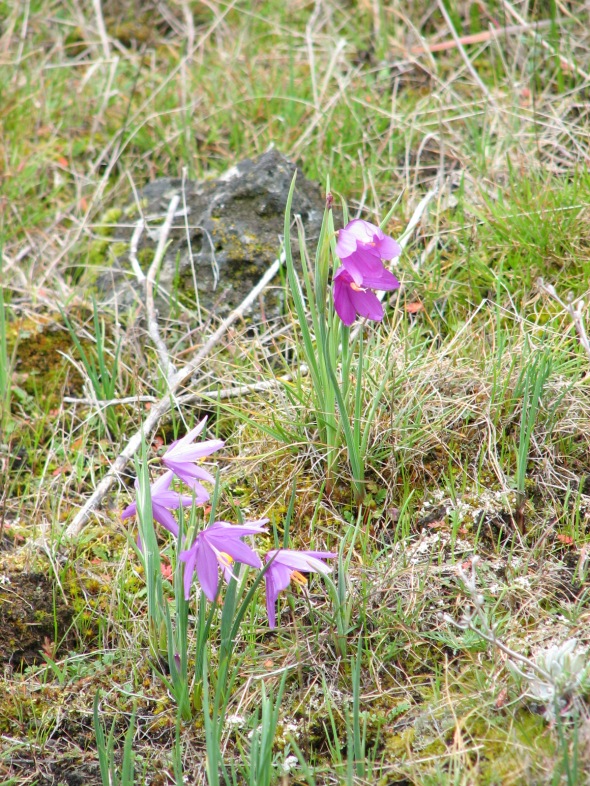


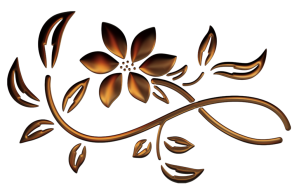
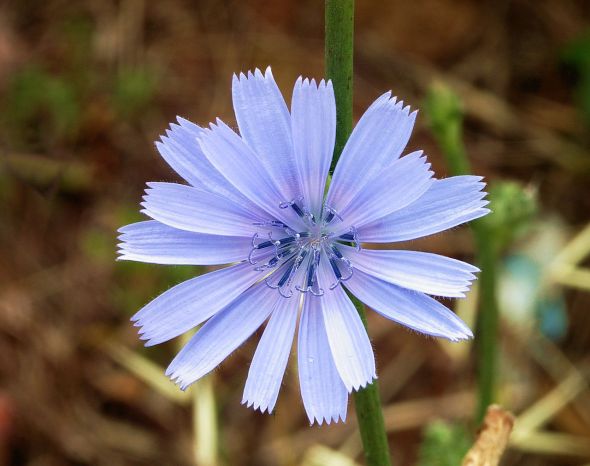

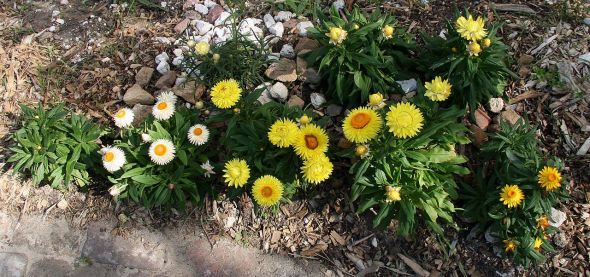

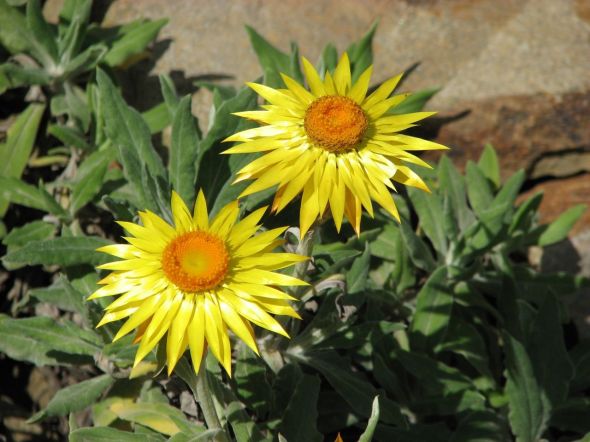

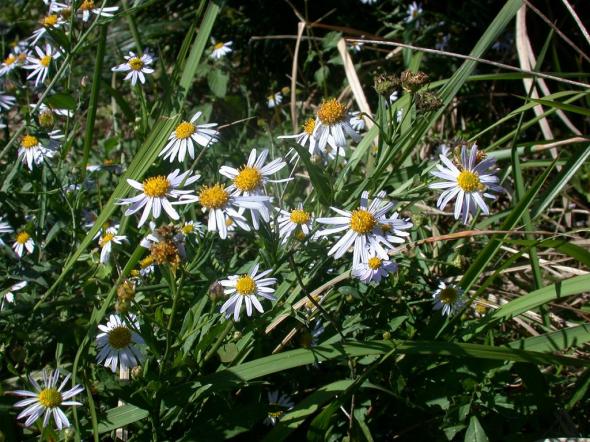
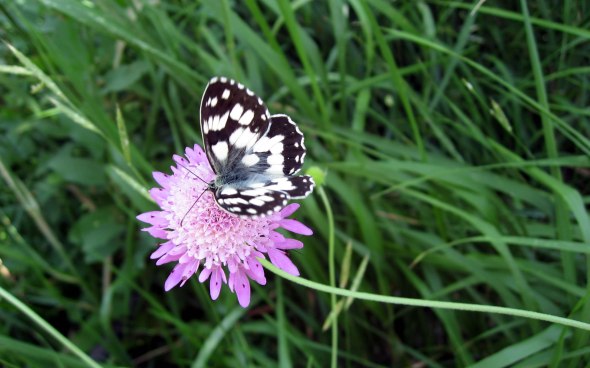
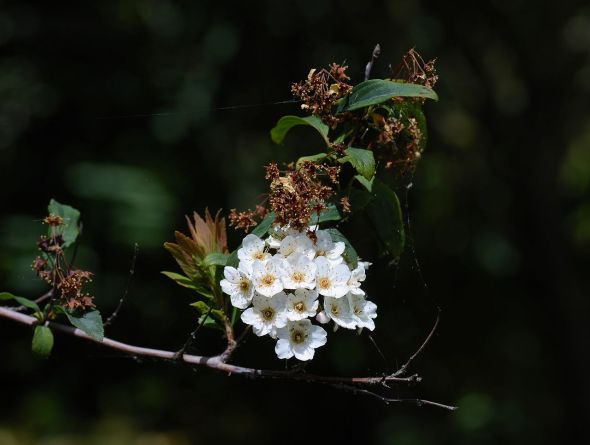

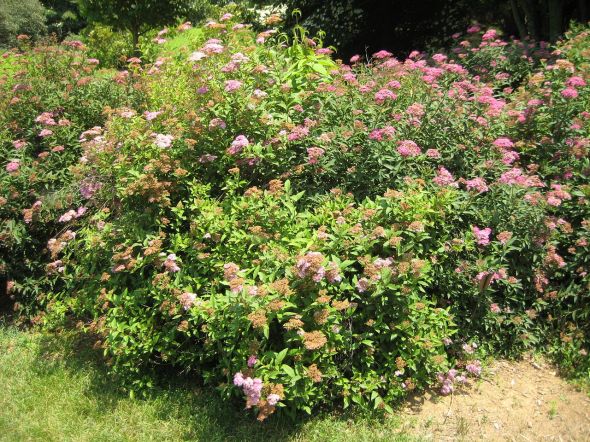

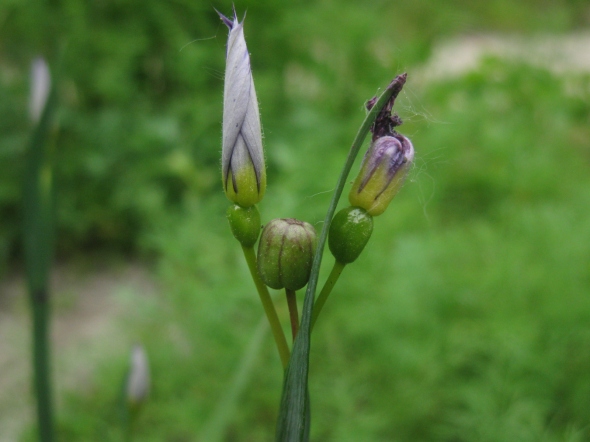

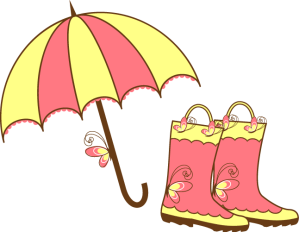
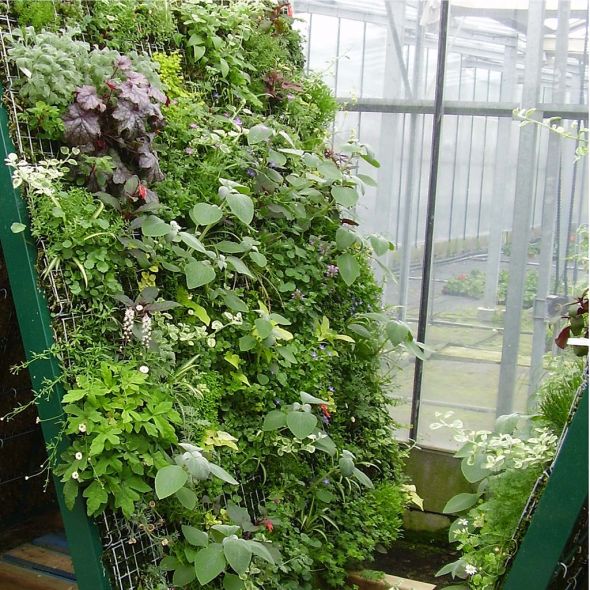
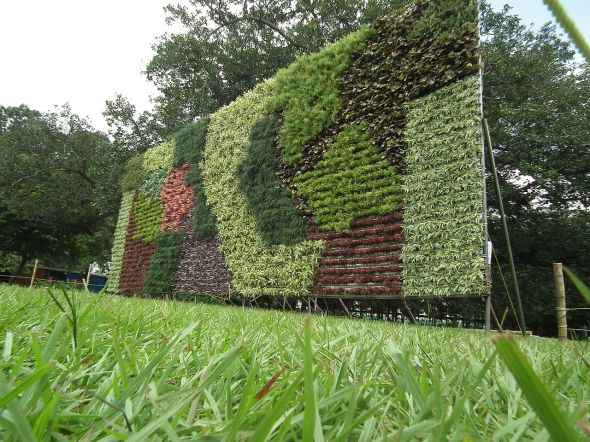
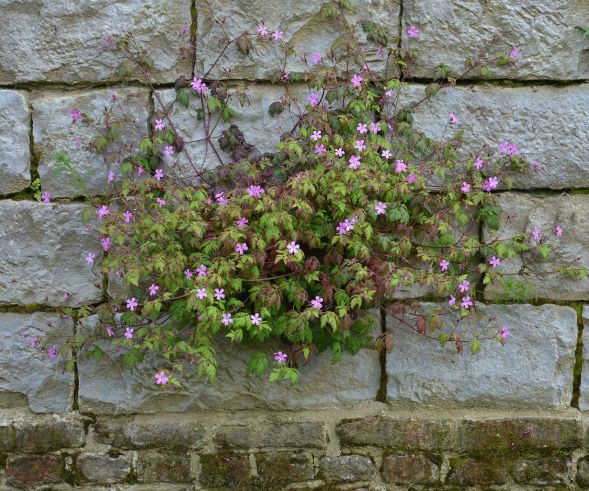
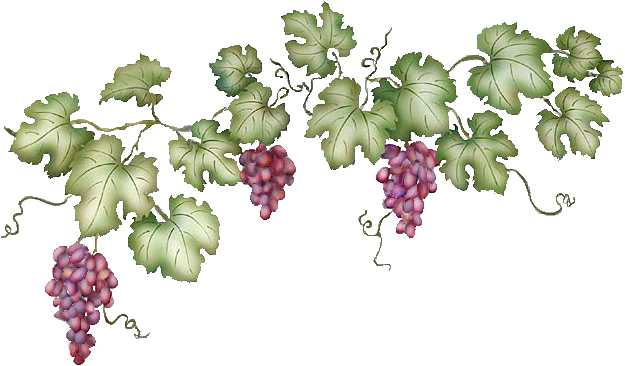
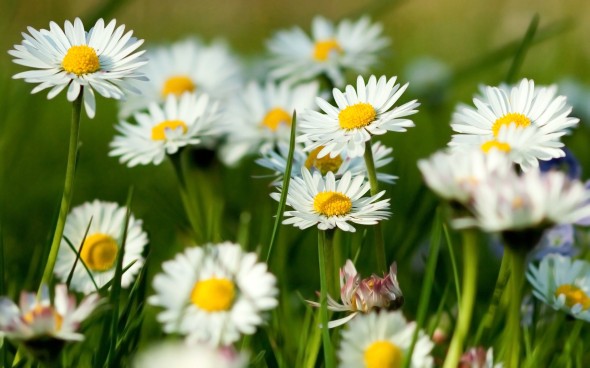


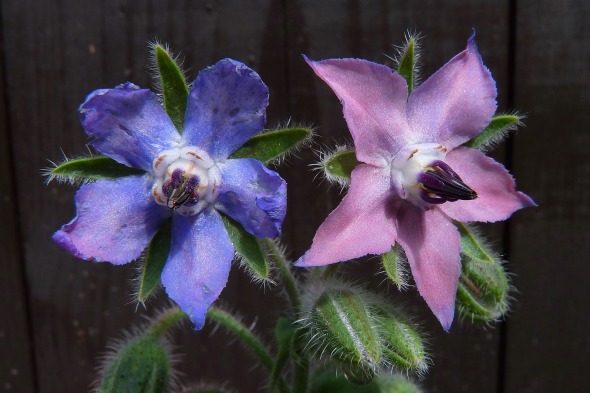

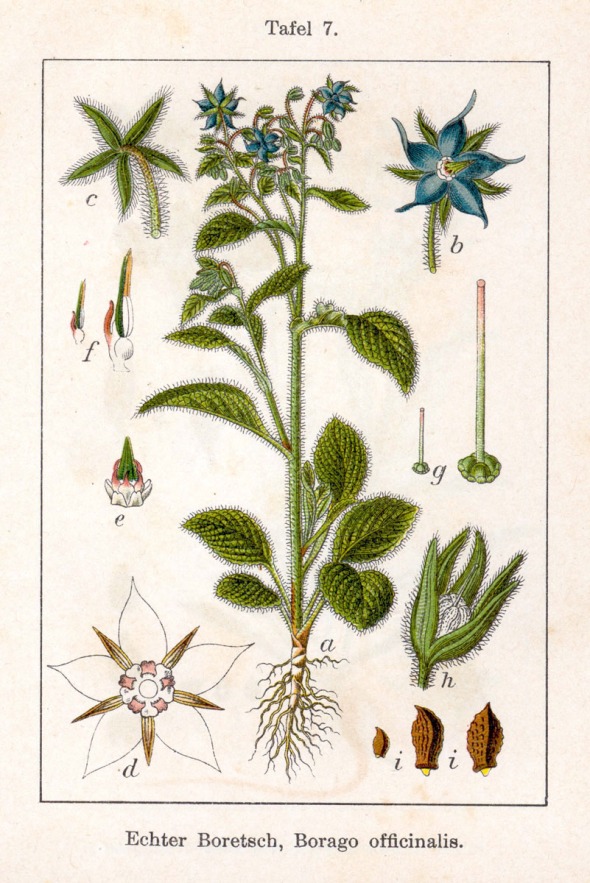
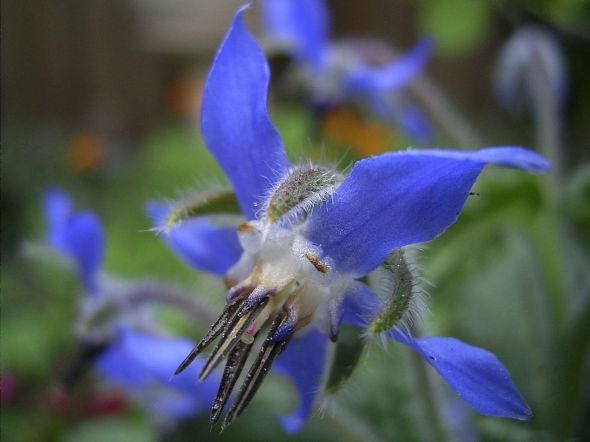
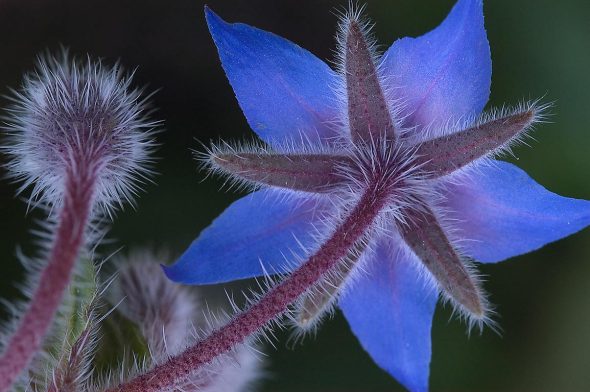









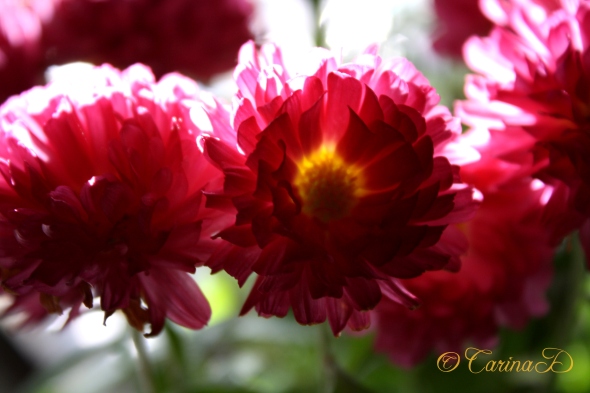


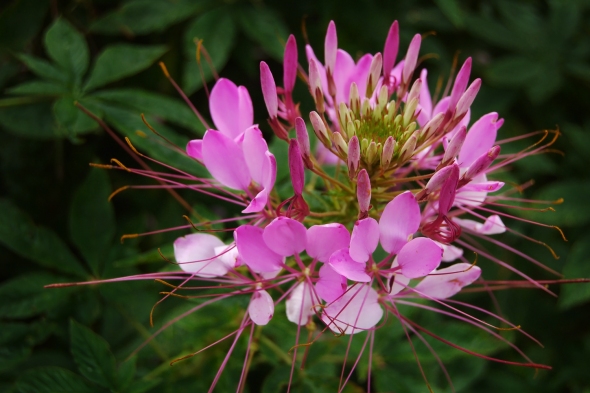








Recent Comments